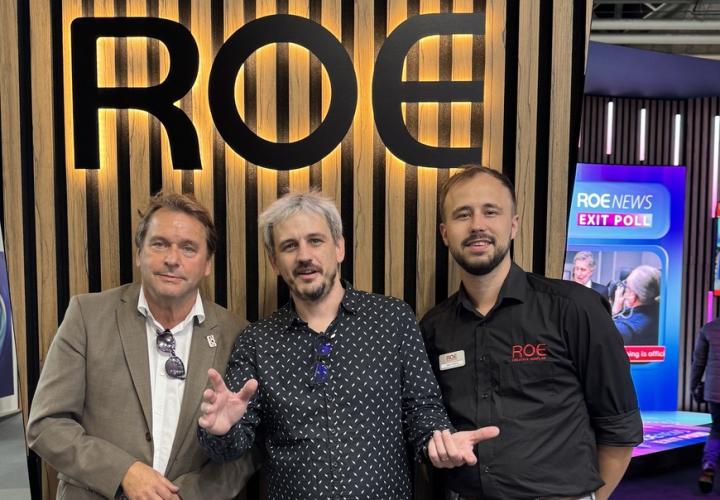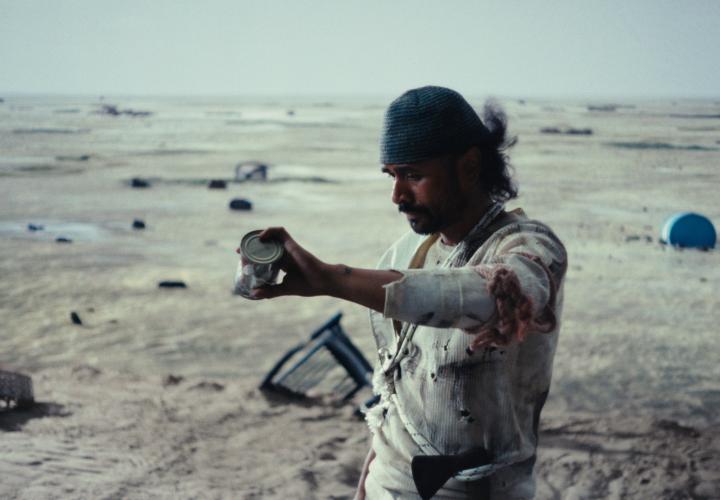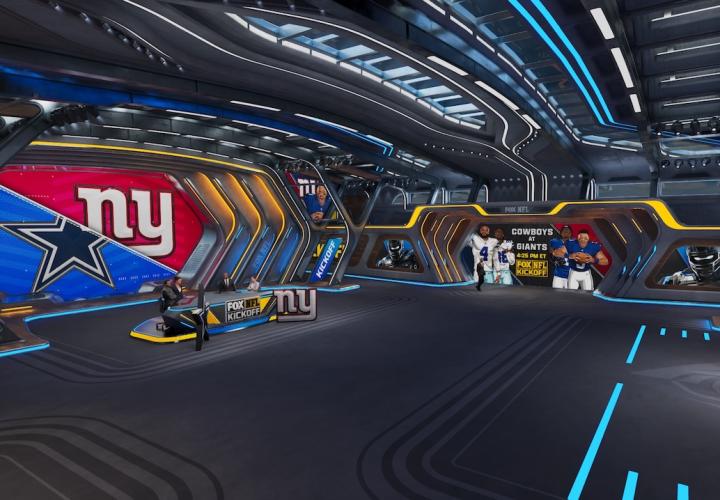
Thesaurus for LED technology
Terminology used for Virtual Production, xR, and Film
New technology often comes with a new set of terminology. To guide your way into the what-is-what of LED technology for virtual production we have complied this easy and no-nonsense thesaurus. Read it below or download it here:
Download the LED technology Thesaurus
Picture by: MMC Studios
Live LED wall
A live LED wall is any LED wall used for virtual production where the content is displayed during the camera shoots.
LED display resolution
The number of distinct pixels in the respective dimension that can be displayed, generally mentioned as pixel per width × height, is the LED display resolution.
Driver IC
The driver IC will control the LED. It will generate the PWM signals to have the LEDs display the required brightness. The modern driver IC’s use many advanced technologies to get the best possible performance out of the LED.
Receiving card
The receiver card is the link between the LED processor (with video input) and the driver ICs (connected to the LEDs, video output). Except for decoding and distributing the video signal, the Receiver card will do a lot of extra corrections, such as brightness, gamma, calibration, etc.
Refresh rate
Refresh rate is how many times per second a frame is redrawn on the display. (Typically, 1920, 3840, 7680Hz)
Scan rate
Scan rate, also named scan mux or multiplexing. One driver IC output pin drives multiple LEDs. This is done by completing the circuit for each LED one by one (multiplexing). During one refresh cycle, all the LEDs will light up once. Typical scan rates are 16:1, 11:1, 8:1
Frame rate
Frame rate is the number of frames per second. This is typically determined by the video source. (Typically, 24, 50, 60Hz)
Scan lines
Scan lines is the effect your eyes or the camera pick up when the refresh rate is too low. A camera is more sensitive than our eyes to pick up scanlines. Typically higher refresh rates are desirable and genlocking (synching) the refresh rates between the screen and camera may be needed.
COB - Chip on Board
COB technology is a method to package the LED chip directly on the module.
GOB - Glue on Board
GOB Technology is an innovative method to seal the LED packages on the module surface with epoxy glue.
Anti-moiré Mask for LED Floor
A special mask fitted to the LED panel or LEDs on the panel reduces the moiré-effect.
Viewing angle
The angle at which a display can be viewed with acceptable visual performance. In other words, the luminous intensity measured at right angles to the surface of the LED chip, a measure of the position where the intensity of the LED light spread reaches 50% of its maximum brightness. The illumination continues past the edge of the viewing angle but continues to decrease in intensity.
Brightness
Brightness is expressed in nits. A nit is a unit of measurement of luminance, or the intensity of visible light, where one nit is equal to one candela per square meter (CD/M2). The higher number of nits, the brighter the screen.
Jitter
Video or image jitter occurs when the horizontal lines of video image frames are randomly displaced due to the corruption of synchronization signals or electromagnetic interference during video transmission. Jitter can cause a display monitor to flicker.
Reflection
Reflection is the mirroring effect of light on surfaces (like an LED).
Color shift
The shift in color when looking at the LED screen under an angle, is due to the placement of the LED diodes (red, green, blue) in the LED package.
Bit-Depth
Bit Depth, aka Color Depth, describes the amount of information stored in each pixel of data. As you increase bit depth, you also increase the number of colors that can be represented. In the case of an 8-bit image, each pixel has 8-bits of data per color (RGB), so for each color channel the pixel has 28 = 256 possible variations. 10-bit would give 210 = 1024 color variations and 12-bit 212 = 4096.
IMD
IMD (Integrated Mounted Devices) technology (N-in-1) integrates two, four or six sets of RGB lamp beads into one small unit.
Genlock
Genlocks, generator locking, is the technique that is used to synchronize video signals, coming out of a signal generator or similar source, to the other picture resources. Genlock technology is widely used in video applications. One of the most common genlock applications is to synchronize cameras. Genlock is used to sync video signal or pixels to an external synchronization source, while synchronizing the SDI output to an external source, the SDI refresh rate is determined with the help of a sync source.
(Read more on genlock)
Related items

ROE Visual Wins Public Tender for Croatia's First Virtual Production Studio
ROE Visual is pleased to announce that the company has won the public tender to equip the new Virtual Production Studio at Antitalent Croatia. The installation will be operational in November 2025, making Antitalent the first facility in Croatia to feature a Virtual Production volume, powered by 400 Ruby 2.6 LED panels and the Megapixel Helios LED processing platform.

ROE Visual Partners with Netherlands Film Academy
ROE Visual is proud to announce a deepened collaboration with the Netherlands Film Academy as the institution invests in a state-of-the-art virtual production (VP) stage. Marking a significant milestone in film education, the Film Academy has chosen ROE Visual’s cutting-edge LED technology to bring the future of storytelling directly into the classroom.

FOX Sports Launches Groundbreaking New LED-Fueled XR/AR Stage
FOX Sports continues to blaze the trail in XR technology and virtual production this week with the relaunch of Stage B at its L.A. headquarters. Home to FOX NFL Kickoff on Sunday mornings and Colin Cowherd’s The Herd on weekdays, the rebuilt studio is a sprawling LED medium composed of more than 54 million LED lights, all supplied by ROE Visual.












